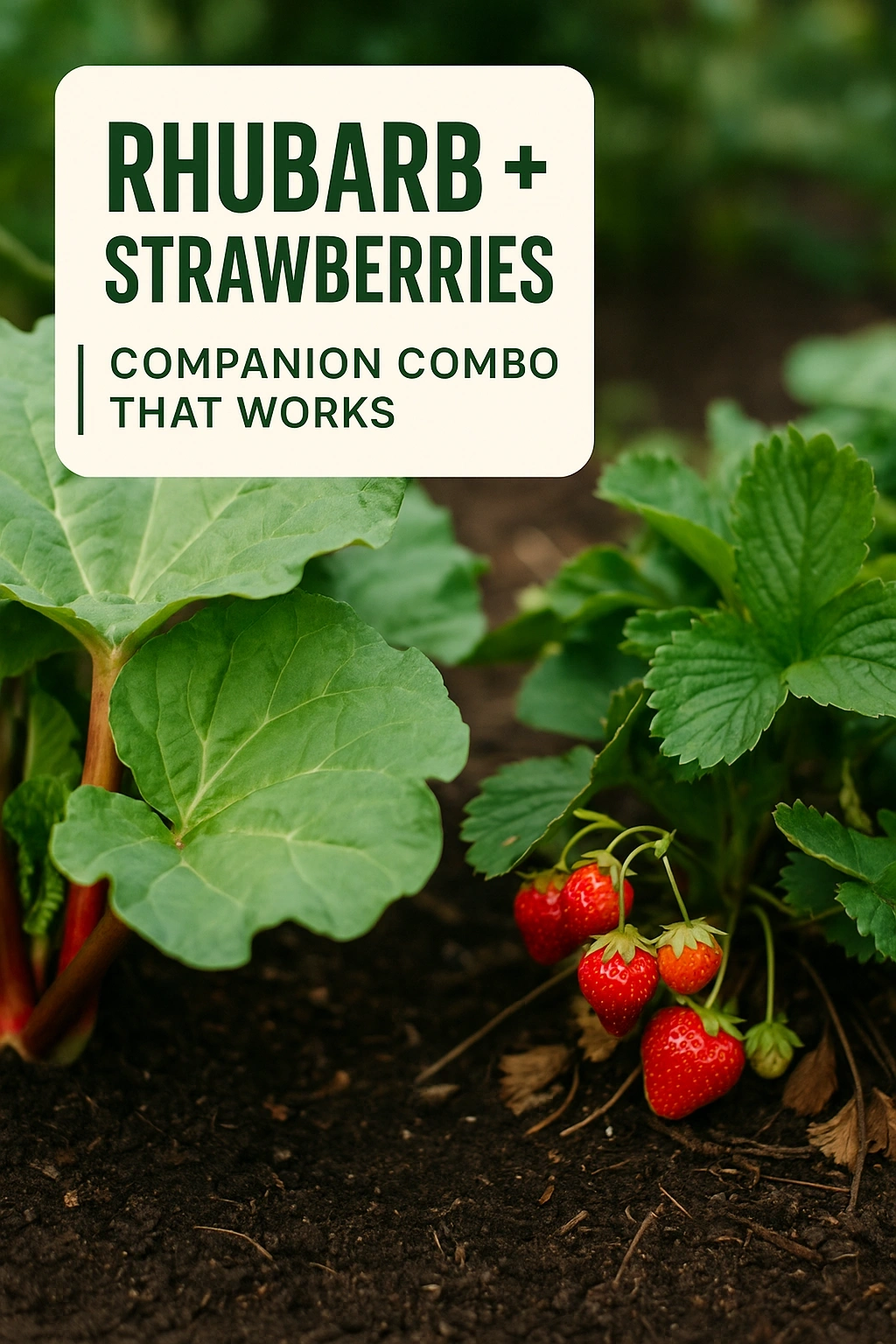
The combination of rhubarb and strawberries in your garden not only enhances the flavor and yield of both plants but also creates a visually appealing and productive space. These two plants complement each other, functioning synergistically to improve growth conditions and pest management. In this article, we will explore the benefits of growing rhubarb and strawberries together, how to cultivate them, and tips to ensure a bountiful harvest.
The Benefits of Companion Planting
Companion planting is a gardening technique that enhances the growth and health of plants when they are grown together. When rhubarb and strawberries are planted in proximity, they can benefit from each other in various ways. Rhubarb’s large leaves provide shade for strawberries, which helps keep the soil cool and retains moisture. Additionally, the deep roots of rhubarb can help break up compacted soil, allowing better drainage for strawberries.
Growing Rhubarb: Tips for Success
Rhubarb is a perennial vegetable that thrives in well-drained soil and requires a good amount of sunlight. When planting rhubarb, select a location that receives full sun for at least six hours a day. Ensure the soil is rich in organic matter, which can be achieved by incorporating compost or well-rotted manure.
Soil Preparation and Planting
Before planting, test your soil’s pH; rhubarb prefers a slightly acidic to neutral soil (pH 6.0 to 7.0). Prepare your garden beds by tilling the soil to a depth of at least 12 inches. Space rhubarb plants about three feet apart to allow for their large growth habit. When planting, ensure that the crown (the part where the roots meet the stems) is slightly above the soil surface to prevent rot.
Strawberries: A Sweet Addition
Strawberries are a favorite among gardeners for their sweet flavor and versatility. They can be grown in various conditions but prefer well-drained soil rich in organic matter. When planting strawberries alongside rhubarb, consider the timing and type of strawberries you choose.
Types of Strawberries and Their Planting Needs
There are three main types of strawberries: June-bearing, everbearing, and day-neutral. June-bearing varieties produce a single large crop in early summer, while everbearing and day-neutral types produce fruit throughout the growing season. For best results, choose everbearing or day-neutral strawberries to extend your harvest while rhubarb is still growing.
Watering and Nutrient Requirements
Both rhubarb and strawberries have specific watering needs. Rhubarb requires consistent moisture to thrive, especially during dry spells. Strawberries, on the other hand, prefer slightly drier conditions once established. A balanced approach to watering ensures that both plants receive adequate moisture without waterlogging the soil.
Fertilizing for Optimal Growth
In addition to proper watering, fertilization plays a crucial role in the health of rhubarb and strawberries. Use a balanced fertilizer in early spring when new growth appears. Avoid over-fertilizing, as this can lead to excessive leaf growth at the expense of fruit production. Organic options such as compost or well-rotted manure are excellent choices for enriching the soil.
Pest and Disease Management
While both rhubarb and strawberries are relatively resilient, they can still be susceptible to pests and diseases. Common pests include aphids, slugs, and strawberry root weevils. Regularly inspect your plants for signs of infestation and take action promptly to mitigate any damage.
Organic Pest Control Methods
Using organic pest control methods is essential for maintaining a healthy garden ecosystem. Introduce beneficial insects, such as ladybugs, to help control aphid populations. For slugs, consider using barriers or traps. Regularly removing any debris around plants can also reduce the likelihood of disease and pest problems.
Harvesting Rhubarb and Strawberries
Harvesting is one of the most rewarding aspects of gardening. Rhubarb is typically ready for harvest in late spring to early summer. The stalks should be firm and at least 12 inches long. To harvest, simply twist the stalks gently to remove them from the plant. Avoid harvesting too much at once to ensure continued growth.
When and How to Harvest Strawberries
Strawberries are harvested when they are fully red and ripe, usually in late spring to early summer for June-bearing varieties and throughout the season for everbearing types. Gently twist the berries to detach them from the stem, ensuring you do not damage the plant. Regular harvesting encourages further fruit production.
FAQs
Can rhubarb and strawberries be planted together in containers?
Yes, rhubarb and strawberries can be grown together in containers, but ensure that the container is large enough to accommodate both plants. Choose a deep container for rhubarb, as it has a larger root system, and use a well-draining potting mix.
What pests should I look out for when growing rhubarb and strawberries?
Common pests include aphids, slugs, and strawberry root weevils. Regular monitoring and organic pest control methods can help manage these pests effectively.
Is it possible to grow rhubarb and strawberries in a small garden?
Absolutely! Both plants can thrive in small gardens. Consider using raised beds or container gardening to maximize space and ensure proper growing conditions.
How often should I water rhubarb and strawberries?
Water rhubarb consistently, especially during dry spells, while strawberries prefer slightly drier conditions once established. A good rule of thumb is to water deeply once a week, adjusting based on weather conditions.
When is the best time to plant rhubarb and strawberries?
The best time to plant rhubarb is in early spring, while strawberries can be planted in early spring or late summer. This timing allows both plants to establish before the growing season.
Conclusion
The rhubarb and strawberries companion combo is a fruitful partnership that can enhance your garden’s productivity and aesthetics. By understanding the needs of each plant and employing effective gardening techniques, you can enjoy a bountiful harvest of these delicious crops. With proper care, the combination of rhubarb and strawberries will not only yield a great harvest but also create a stunning visual display in your garden.
